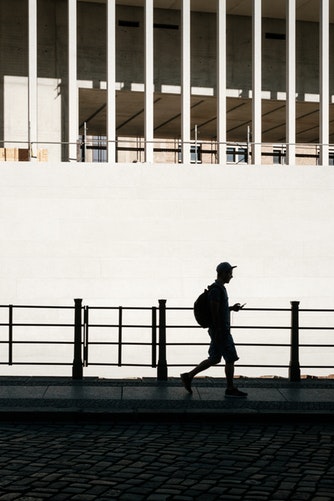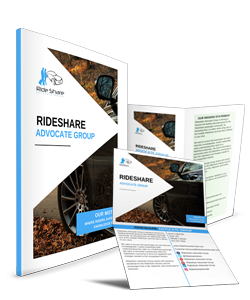5 Tips for Eating Healthy During a Day Full of Work or School
It seems like these days, practically everyone is on the go, all day long. Whether you’re an office professional working the 9-to-5 grind or a student spending long hours in the library, it’s all too easy to overlook healthy eating in favor of the vending machine or local pizza joint. Here’s the good news: With some planning and a few new habits, you can incorporate the below tips into your routine and help yourself make healthy choices all throughout your busy day.
- Power through with protein. Protein-rich meals and snacks will help you stay full for longer throughout
 the day, making you less likely to give in to those doughnuts your coworker brought into the office. When you begin to digest protein, it actually sends a “full” signal to your brain and curbs your appetite – whereas unhealthy snacks like chips or candy bars send spikes of sugar into your bloodstream and can actually make you hungrier. Almonds, hard-boiled eggs, and Greek yogurt are all great foods to reach for when that mid-afternoon snack urge hits!
the day, making you less likely to give in to those doughnuts your coworker brought into the office. When you begin to digest protein, it actually sends a “full” signal to your brain and curbs your appetite – whereas unhealthy snacks like chips or candy bars send spikes of sugar into your bloodstream and can actually make you hungrier. Almonds, hard-boiled eggs, and Greek yogurt are all great foods to reach for when that mid-afternoon snack urge hits! - Stay hydrated. If you’re on the go all day long, it can be easy to forget those 8 daily glasses of water (you know, the ones we’re all supposed to be drinking…). But the same part of your brain (the hypothalamus) controls both appetite and thirst – so when you’re dehydrated, your body can get confused and mistake that feeling for hunger. To avoid this, try adding a glass of water to your normal coffee routine or buying a reusable bottle to keep at your desk. Sipping on water throughout the day will help keep your body hydrated and reduce those fake “hunger” pangs.
- Brown-bag it. Packing your own meals and snacks allows you to make healthy choices ahead of time. Make it an evening routine to put together some food for the next day; you can get a small, insulated lunchbag to keep things like yogurt or cheese fresh if you won’t have access to a fridge. When you have food readily available, you won’t be tempted to indulge in unhealthy options that are quick and convenient – your coworkers might miss you on the daily noontime fast-food-joint runs, but your body (and wallet!) will thank you.
- Avoid sugar. As tantalizing as that mid-day soda might be, snacking on high-sugar foods can lead to a crash as your blood sugar spikes, then drops, feeling you drained and sluggish. Rather than reaching for a chocolate bar, if you’re craving something sweet try some fresh fruit – a handful of raspberries or a banana will give you that sweet taste, plus the sugar will be natural and you’ll get bonus nutrients and fiber!
- Eat often. Waiting long stretches of time between meals can make you ravenous and more likely to crave fatty, calorie-dense foods. To beat this instinct, try eating small meals every 3-4 hours. Staying moderately full will give you the presence of mind to continually make smart decisions about what to eat so you can properly nourish your body.

By making these changes, you can stick to – and even enjoy! – a healthy diet even on your busiest day. Fueling your body with the right foods will help you stay sharp, energetic and on top of your game all week long.
For more commuting and rideshare tips, head over to our website.



 traveling or to at least make it more manageable. If you plan ahead, you can be assured that your travel will be as comfortable as possible. Here are five tips to help tame that back while traveling.
traveling or to at least make it more manageable. If you plan ahead, you can be assured that your travel will be as comfortable as possible. Here are five tips to help tame that back while traveling. ask for a whole row to yourself to stretch out. Recline your seat. You paid all this money for your travel tickets. Let the company work for you. Flight attendants are there to help you. That is specifically their job. If you need Tylenol or IBUProfen, they more than likely have some. There is no shame in asking for help managing your comfort when traveling.
ask for a whole row to yourself to stretch out. Recline your seat. You paid all this money for your travel tickets. Let the company work for you. Flight attendants are there to help you. That is specifically their job. If you need Tylenol or IBUProfen, they more than likely have some. There is no shame in asking for help managing your comfort when traveling. Going to school at night is a great choice for students who have jobs, kids, or other commitments during the day. But just like any other activity done at night, there are some risks involved. Parking lots and campus footpaths are particularly prime spots for unexpected, unwelcome events. Follow these tips to help you stay calm, confident, and less likely to be victimized.
Going to school at night is a great choice for students who have jobs, kids, or other commitments during the day. But just like any other activity done at night, there are some risks involved. Parking lots and campus footpaths are particularly prime spots for unexpected, unwelcome events. Follow these tips to help you stay calm, confident, and less likely to be victimized.
 victims.
victims.
 You know how it is…you get all dressed up, put on your dancing shoes, and head out for a night on the town with your friends. You are aiming to have a great night out, but you might not also be thinking about the safety aspects of it. Sure, you probably know all about the buddy system, which is just as important for men as it is for women, but other than that, you might not put much thought into staying safe when you’re going out for the night. Make sure your night doesn’t get ruined, and practice these safety tips whenever you go out!
You know how it is…you get all dressed up, put on your dancing shoes, and head out for a night on the town with your friends. You are aiming to have a great night out, but you might not also be thinking about the safety aspects of it. Sure, you probably know all about the buddy system, which is just as important for men as it is for women, but other than that, you might not put much thought into staying safe when you’re going out for the night. Make sure your night doesn’t get ruined, and practice these safety tips whenever you go out! driving home or have a rideshare car lined up! Don’t wait to figure this out at the end of the night when people have been drinking and spending money. Plan and budget for it ahead of time, and make sure all your friends head home with you so they don’t get themselves into unsafe situations too!
driving home or have a rideshare car lined up! Don’t wait to figure this out at the end of the night when people have been drinking and spending money. Plan and budget for it ahead of time, and make sure all your friends head home with you so they don’t get themselves into unsafe situations too!
 off your guard. When you’re looking at your phone or listening to a speaker, you’re missing subtle cues from others, such as avoiding eye contact, shifty body language, and darting eyes. These tiny signals can alert you to taking evasive action long before anything happens. Once something happens, it’s often too late.
off your guard. When you’re looking at your phone or listening to a speaker, you’re missing subtle cues from others, such as avoiding eye contact, shifty body language, and darting eyes. These tiny signals can alert you to taking evasive action long before anything happens. Once something happens, it’s often too late. Act Confident. Holding a smartphone instead of engaging in your surroundings screams a message of uncertainty. Potential attackers pick victims based largely on body language, and lack of confidence is the last thing you want to project. Walking and sitting with your shoulders back and face forward sends a message of self-assurance. It tells attackers, “I’ve got places to be and things to do. I know where you are and don’t get in my way.”
Act Confident. Holding a smartphone instead of engaging in your surroundings screams a message of uncertainty. Potential attackers pick victims based largely on body language, and lack of confidence is the last thing you want to project. Walking and sitting with your shoulders back and face forward sends a message of self-assurance. It tells attackers, “I’ve got places to be and things to do. I know where you are and don’t get in my way.”






